 In today’s busy world, it’s easy to put self-care on the back burner. When there are seemingly endless deadlines at work that must be met, household chores to tackle, and a calendar that is jam-packed it can be extremely difficult to even think about taking time out for ourselves. This is why we must take just a few minutes out of our days. And, as Millennial as it may sound, we need to begin to give some love to ourselves so that we not only exist, but live life to the fullest.
In today’s busy world, it’s easy to put self-care on the back burner. When there are seemingly endless deadlines at work that must be met, household chores to tackle, and a calendar that is jam-packed it can be extremely difficult to even think about taking time out for ourselves. This is why we must take just a few minutes out of our days. And, as Millennial as it may sound, we need to begin to give some love to ourselves so that we not only exist, but live life to the fullest.
Why Is Self-care Important?
There are many reasons to take care of yourself:
- Increase self-worth: Confidence, self-esteem, and feeling positive emotions about yourself can do wonders for you and those around you.
- Reduce stress: Constant stress can take a huge toll on your mind and body.
- Achieve work-life balance: You may find taking small breaks out of the day to focus on yourself not only helps you focus better on the task at hand, but also puts joy back into life outside of work.
- Improve physical health: There is no question that self-care is good for you mentally, but it’s important physically as well. Getting better sleep, eating more healthfully, being more active—all deliver numerous physical benefits.
As a dietitian, nutrition is one aspect of self-care that is extremely important to me. For some, this could mean eating a little dark chocolate every night, buying a new water bottle to drink ice-cold water all day, or making a smoothie every morning in place of the usual breakfast.
Ways to Care for Yourself
But what are some other ways you can practice self-care that aren’t nutrition-related?
- Call a loved one to chat for a few minutes.
- Practice saying “no” to avoid overextending yourself. (On the other hand, practice saying “yes” if you feel that a healthy dose of socializing would be good!)
- Take a stroll midday or once you get home—no matter the weather—and listen to an audiobook.
- Take deep, cleaning breaths—in through the nose, out through the mouth—before bed.
- Journal at the end of the day, even if it’s just a few quick notes.
- Sip a glass of hot tea and stare out the window.
- Listen to your favorite music while you take a hot shower or bath.
- Go get a massage.
- Sign up for a painting class with a friend.
- Book one of the less-expensive midweek flights to Florida for some sunshine.
- Visit the new restaurant you’ve been wanting to try.
- Take a drive with the windows down and music blasting (once it has warmed up).
- Visit a library and get lost reading a good book.
- Declutter your room and make your bed.
- Work on a puzzle or a coloring book.
Try to think of easy ways to practice self-care on your own. Items on this list might be relaxing for one person but could be a total nightmare for another. There is no right or wrong way to go about self-care. Just do what makes you happy. And remember, self-care is not indulgent. It is a must and it matters. Make sure some of your self-care techniques are easy to start and just take a few minutes of your day so that you can incorporate them into your daily schedule consistently.
This blog was written by Lindsey Hehman, MA, RD, CD. To learn more about the NIFS bloggers, click here.


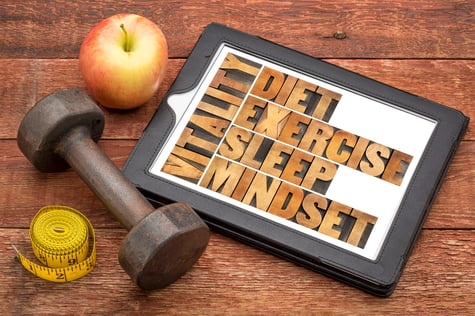 Let’s be real: a health journey is not always linear and not always easy. Sometimes it can be overwhelming and mucky. What do you do? Where do you start? What if you backslid and need to get back on track? There is so much to health, right? If you try to fix it all at once, you might become overwhelmed and at a greater risk of failure.
Let’s be real: a health journey is not always linear and not always easy. Sometimes it can be overwhelming and mucky. What do you do? Where do you start? What if you backslid and need to get back on track? There is so much to health, right? If you try to fix it all at once, you might become overwhelmed and at a greater risk of failure. 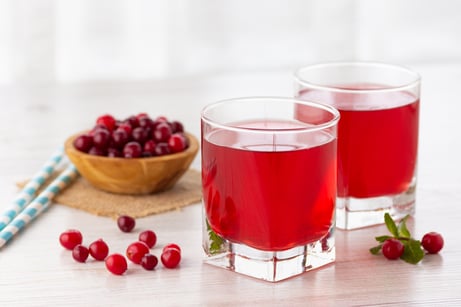 Cranberries and cranberry-derived products are commonly used as a remedy for urinary tract infections, especially among women. Cranberries contain proanthocyanidins (PACs), specifically
Cranberries and cranberry-derived products are commonly used as a remedy for urinary tract infections, especially among women. Cranberries contain proanthocyanidins (PACs), specifically 
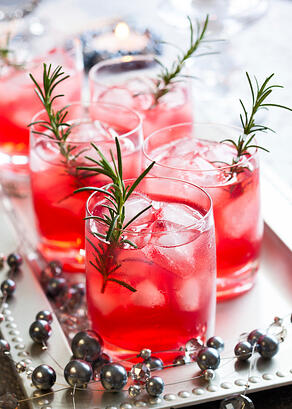

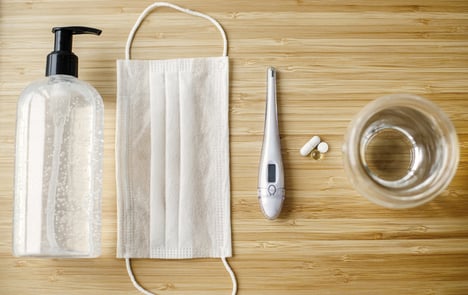 Healthcare providers and scientists are all working diligently to find ways to prevent, treat, and cure COVID-19. Many of us are eager for answers and probably getting tired of not knowing what to believe. One of the hot topics floating around is about Vitamin D’s role in preventing COVID-19. Can Vitamin D really protect us against COVID-19 or at least lessen the effects? Let’s take a look.
Healthcare providers and scientists are all working diligently to find ways to prevent, treat, and cure COVID-19. Many of us are eager for answers and probably getting tired of not knowing what to believe. One of the hot topics floating around is about Vitamin D’s role in preventing COVID-19. Can Vitamin D really protect us against COVID-19 or at least lessen the effects? Let’s take a look.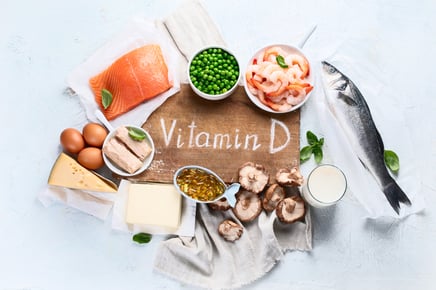 Vitamin D Recommendations
Vitamin D Recommendations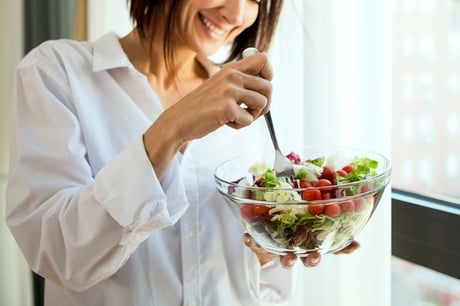 Come on. We've all heard this before—from friends, from coworkers, and possibly from our own mouths. I swear, salads are easily the most famous “diet food.” Why is that? Do we really have to eat salads to lose weight, clean out our “pipes,” or be healthy? In this blog I break down each of these claims and then talk about ways to improve your veggie game!
Come on. We've all heard this before—from friends, from coworkers, and possibly from our own mouths. I swear, salads are easily the most famous “diet food.” Why is that? Do we really have to eat salads to lose weight, clean out our “pipes,” or be healthy? In this blog I break down each of these claims and then talk about ways to improve your veggie game! As winter approaches, don’t let it discourage you from reaching your full potential and goals you’ve set for yourself. Continue to use exercise and strength training to keep your body healthy.
As winter approaches, don’t let it discourage you from reaching your full potential and goals you’ve set for yourself. Continue to use exercise and strength training to keep your body healthy.  There’s always an assumption that fitness professionals work out 2 hours a day, 7 days a week. They eat healthy all day long and never have any junk food. Basically people think that we are perfect and never make mistakes. I have been in the health and fitness industry for more than 10 years now and I can honestly say that couldn’t be further from the truth.
There’s always an assumption that fitness professionals work out 2 hours a day, 7 days a week. They eat healthy all day long and never have any junk food. Basically people think that we are perfect and never make mistakes. I have been in the health and fitness industry for more than 10 years now and I can honestly say that couldn’t be further from the truth.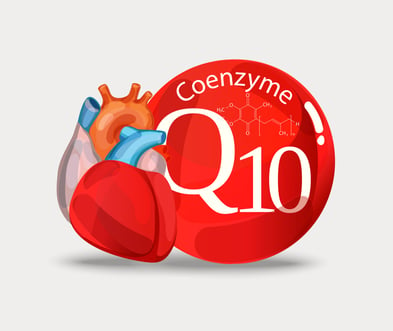 Coenzyme Q10, also known as ubiquinone, is a commonly used supplement by those with cardiovascular risks and disease, and especially those using statins. CoQ10 acts as a carrier in our cells to assist in
Coenzyme Q10, also known as ubiquinone, is a commonly used supplement by those with cardiovascular risks and disease, and especially those using statins. CoQ10 acts as a carrier in our cells to assist in 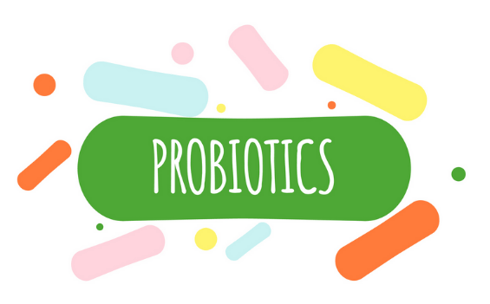 “Take a probiotic; it helps with your gut.” We have all heard it from friends, doctors, and Registered Dietitians. Is it really that simple, though? It is no secret that probiotics really do help with a variety of gastrointestinal (GI) issues. However, did you know that there are specific strains of probiotics that help with specific symptoms, and while one strain may help with one GI symptom, it may not help with another? Not all probiotics are created equal, and not all supplements labeled “probiotic” will yield health benefits.
“Take a probiotic; it helps with your gut.” We have all heard it from friends, doctors, and Registered Dietitians. Is it really that simple, though? It is no secret that probiotics really do help with a variety of gastrointestinal (GI) issues. However, did you know that there are specific strains of probiotics that help with specific symptoms, and while one strain may help with one GI symptom, it may not help with another? Not all probiotics are created equal, and not all supplements labeled “probiotic” will yield health benefits.